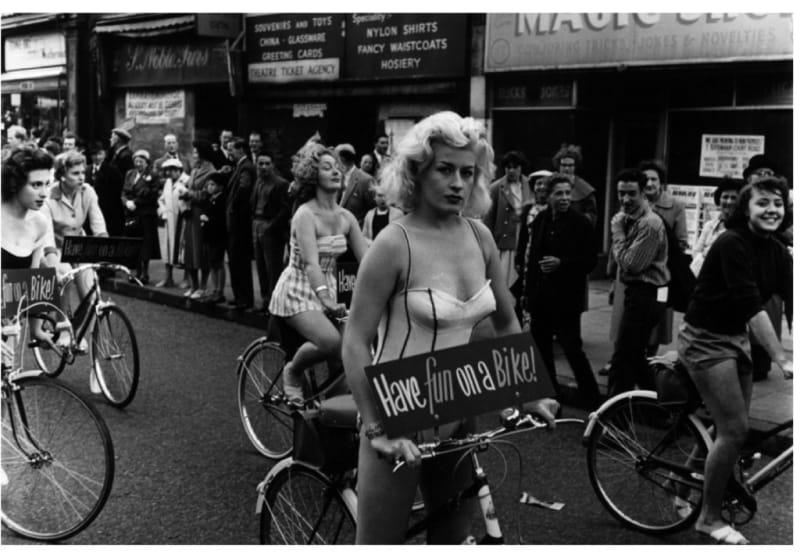'Photography involves two main distortions - the simplification into black and white and the seizing of an instant in time. It is this particular mixture of reality and unreality, and the photographer's power to select, that makes it possible for photography to be an art. Whether it is good art depends on the power and truth of the artist's statement.' (Roger Mayne, Peace News, 1960).
Born in Cambridge in 1929, Roger Mayne is an English photographer, most famous for his documentation of the children of Southam Street, London. He explained: "My reason for photographing the poor streets is that I love them, and the life on them (I am here concerned with what I see: for the moment it is irrelevant that most of these houses have no baths, and that their structure is endangered by disrepair). Empty, the streets have their own kind of beauty, a kind of decaying splendour, and always great atmosphere whether romantic, on a hazy winter day, or listless when the summer is hot; sometimes it is forbidding; or it may be warm and friendly on a sunny spring weekend when the street is swarming with children playing, and adults walking through or standing gossiping. I remember my excitement when I turned a corner into Southam Street, a street I have returned to again and again... I think an artist must work intuitively, and let his attitudes be reflected by the kinds of things he likes or finds pictorial. Attitudes will be reflected because an artist is a kind of person who is deeply interested in people, and the forces that work in our society. This implies a humanist art, but not necessarily an interest in 'politics'."
Mayne studied Chemistry at Balliol College, Oxford and began contributing to Picture Post after his graduation in 1951. In 1956 he had a one-man show of his portraits at the ICA (UK), and George Eastman House (U.S.). By 1957 he was established as a freelance photographer for London magazines and book-jacket designers. It was during the mid-1950s that Mayne began taking pictures of that which he knew best, the post-war streets of West London, namely Southam Street, an area that would later be demolished in an effort to clear the slums of the area.
The novelist Colin MacInnes asked Mayne to contribute the cover shot for Absolute Beginners (1959), which is set in the area around Southam Street. Mayne's photographs of Southam Street were exhibited as part of a major retrospective of his work at the Victoria and Albert Museum in London in 1986. They have subsequently been used for concert backdrops, record sleeves and press-adverts by the singer Morrissey.
Mayne studied Chemistry at Balliol College, Oxford and began contributing to Picture Post after his graduation in 1951. In 1956 he had a one-man show of his portraits at the ICA (UK), and George Eastman House (U.S.). By 1957 he was established as a freelance photographer for London magazines and book-jacket designers. It was during the mid-1950s that Mayne began taking pictures of that which he knew best, the post-war streets of West London, namely Southam Street, an area that would later be demolished in an effort to clear the slums of the area.
The novelist Colin MacInnes asked Mayne to contribute the cover shot for Absolute Beginners (1959), which is set in the area around Southam Street. Mayne's photographs of Southam Street were exhibited as part of a major retrospective of his work at the Victoria and Albert Museum in London in 1986. They have subsequently been used for concert backdrops, record sleeves and press-adverts by the singer Morrissey.
